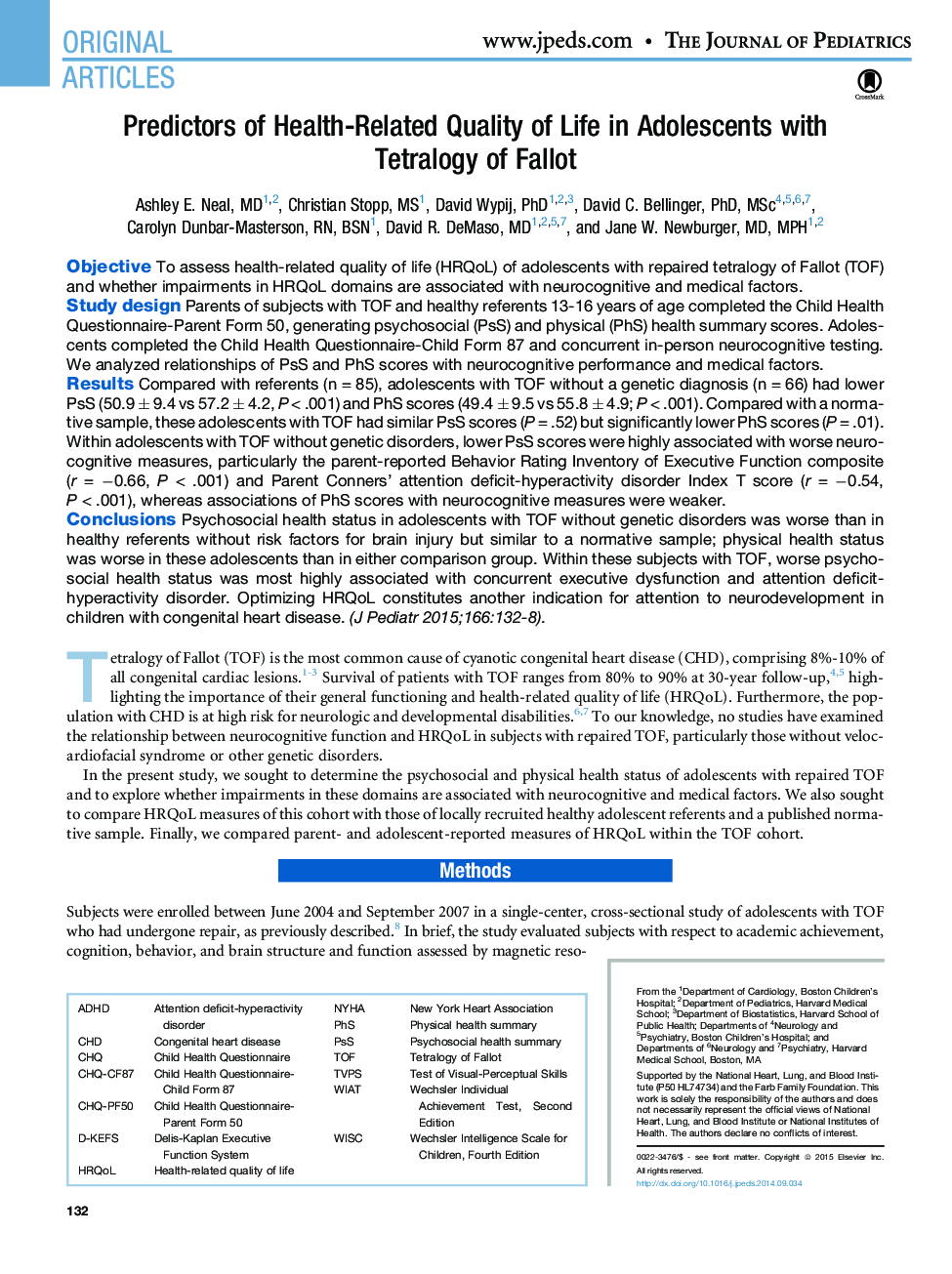| Article ID | Journal | Published Year | Pages | File Type |
|---|---|---|---|---|
| 6220029 | The Journal of Pediatrics | 2015 | 7 Pages |
ObjectiveTo assess health-related quality of life (HRQoL) of adolescents with repaired tetralogy of Fallot (TOF) and whether impairments in HRQoL domains are associated with neurocognitive and medical factors.Study designParents of subjects with TOF and healthy referents 13-16 years of age completed the Child Health Questionnaire-Parent Form 50, generating psychosocial (PsS) and physical (PhS) health summary scores. Adolescents completed the Child Health Questionnaire-Child Form 87 and concurrent in-person neurocognitive testing. We analyzed relationships of PsS and PhS scores with neurocognitive performance and medical factors.ResultsCompared with referents (n = 85), adolescents with TOF without a genetic diagnosis (n = 66) had lower PsS (50.9 ± 9.4 vs 57.2 ± 4.2, P < .001) and PhS scores (49.4 ± 9.5 vs 55.8 ± 4.9; P < .001). Compared with a normative sample, these adolescents with TOF had similar PsS scores (P = .52) but significantly lower PhS scores (P = .01). Within adolescents with TOF without genetic disorders, lower PsS scores were highly associated with worse neurocognitive measures, particularly the parent-reported Behavior Rating Inventory of Executive Function composite (r = â0.66, P < .001) and Parent Conners' attention deficit-hyperactivity disorder Index T score (r = â0.54, P < .001), whereas associations of PhS scores with neurocognitive measures were weaker.ConclusionsPsychosocial health status in adolescents with TOF without genetic disorders was worse than in healthy referents without risk factors for brain injury but similar to a normative sample; physical health status was worse in these adolescents than in either comparison group. Within these subjects with TOF, worse psychosocial health status was most highly associated with concurrent executive dysfunction and attention deficit-hyperactivity disorder. Optimizing HRQoL constitutes another indication for attention to neurodevelopment in children with congenital heart disease.
